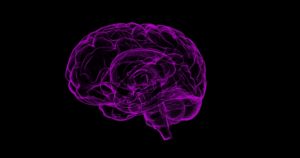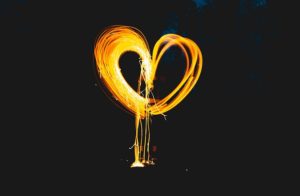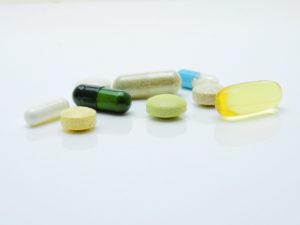As we in the US get ready to stuff ourselves full of Thanksgiving food, we are also preparing for a few hours around a table with (gasp!) family. In some families, this means great conversation, laughter, and fun. In others, it can mean tense avoidance of topics that dinner guests don’t quite see eye-to-eye on (politics anyone?). Fear not, though! Science has once again come to the rescue!
Here are some Thanksgiving science facts that will be sure to surprise your kids, and your guests!
Fact #1: The turkeys we eat are white not brown.
When we think of a Thanksgiving turkey, we often envision something like this:
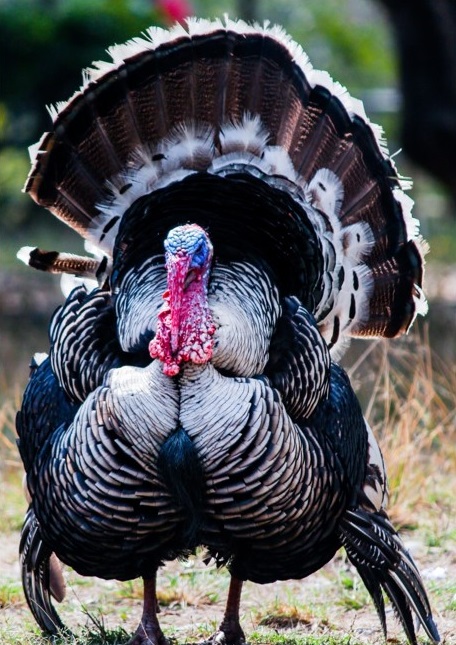
Nope! The turkeys we eat were bred to be completely white! Some say that the Aztecs are the ones that began breeding turkeys specifically for white feathers over 2000 years ago, but others say that the real preference for this trait began in the 1920s.
This was entirely based on how appetizing the turkey looked. Black pin feathers in the meat just didn’t look as appetizing as white ones. If you watch the Presidential pardoning of the turkey this year, you’ll notice the turkey actually looks like this:

Fact #2: White and dark meat are two different types of muscle
Ever wonder why those two different parts of the bird look and taste so different? It’s because turkeys use legs and thighs for long-term activity like walking, and breast muscle is for short, fast activity like wing flapping. Breast muscles are “fast-twitch” muscles that work in bursts and, as a result, don’t need as much oxygen or fat.
The legs and thighs contain what are called “slow-twitch” muscles that can sustain movement for a longer period of time. To do this, those muscles need a lot of oxygen and a source of slow-burning energy. Dark meat has more of a dark colored protein called myoglobin that traps oxygen in the muscle, and also has more fat as an energy source. Still, even the legs of a turkey are considered a low-fat food.
Fact #3: The turkeys we eat cannot breed naturally.
For almost a century now, breeding programs have selected for the largest turkeys with the most meat. After decades of doing this, the male turkeys (which are the ones we eat), are so large that they cannot safely mount a female to breed naturally.
In fact, the turkeys we eat only grow for 18 weeks before they’re big enough for us to buy. This is because turkeys were bred to be not only big, but fast-growing, to improve farmer profit.
The broad-breasted white turkey is the breed that you’ll find in supermarkets. When full-grown and ready to breed, they can weigh up to 80lbs! This is just too much for the females to accomodate, so nearly all turkeys in the commercial industry must be artificially inseminated to breed new turkeys.
Fact #4: Only male turkeys gobble.
While females (hens) can make a variety of other sounds, the males (toms) are the only ones that can make that characteristic gobble. Males use the gobble to attract to hens to mate with, and those gobbles are LOUD! They can be heard up to a mile away!
Once the turkey hens notice the toms, they choose whom to mate with based on the size of a protrusion on his head, called the snood. The larger the snood, the more enticing and more dominant the tom.
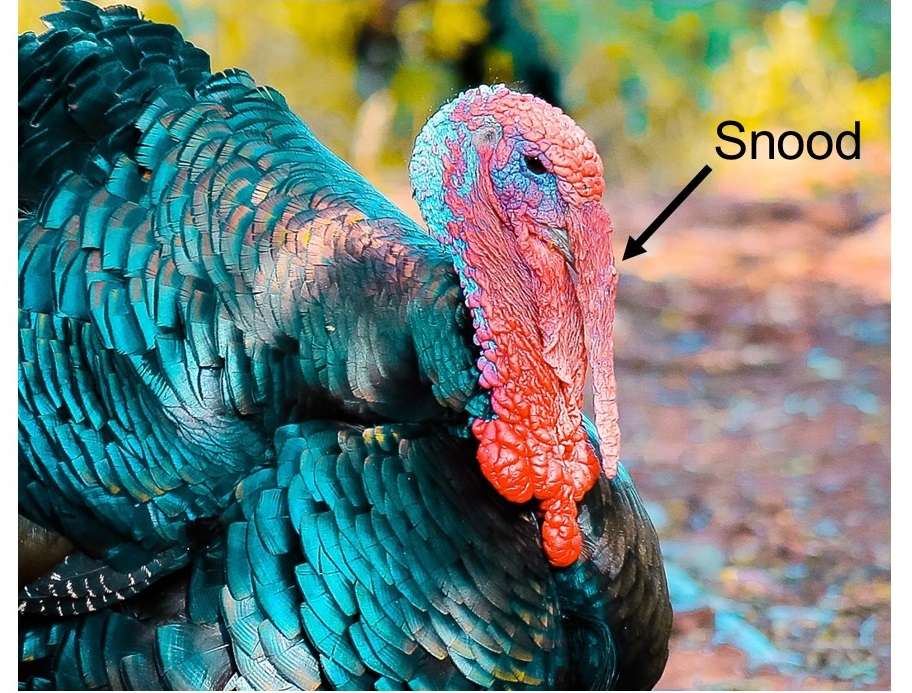
Fact #5: Sweet potatoes and yams are not the same thing
You’ll often find sweet potatoes labeled as “yams” in the supermarket, but they are actually entirely different plant species. Sweet potatoes are closely related to morning glories, while yams are closely related to lillies. The confusion comes from some unfortunate naming that happened early on.
A long time ago, sweet potatoes were called “nyami”, after a similar plant from Africa. This word was later shortened to “yams”. Real yams have a rougher tree-bark appearance and the flesh is white and starchy. Sweet potato flesh can be white, yellow, orange, or purple, and tends to be sweeter. Both are very nutritious.
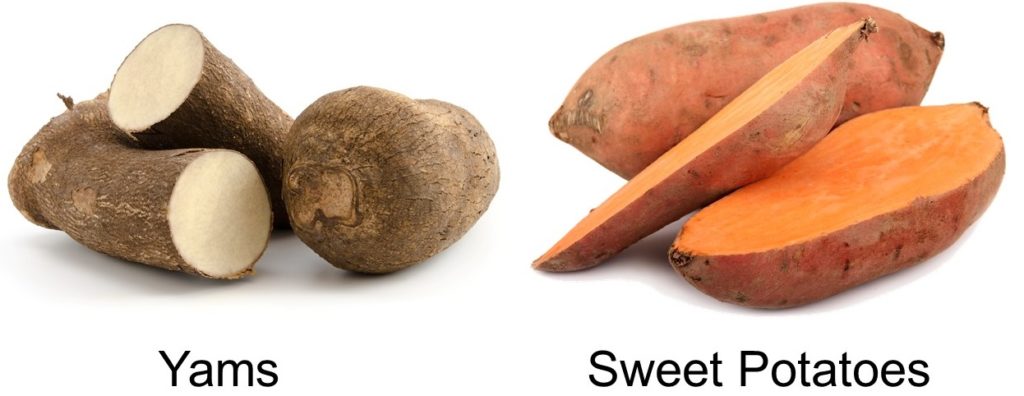
Fact #6: Eating too many sweet potatoes can turn you orange.
That’s right! Orange veggies like sweet potatoes, carrots, and pumpkins are orange because of a pigment they contain called beta-carotene. This pigment is usually good for you, but if you eat too much of it, it enters the bloodstream and gets deposited under the skin.
On the plus side, you’d have to eat an extremely large amount of these veggies to start looking like an Oompa Loompa, and sweet potatoes, in particular, contain not only beta-carotene, but also vitamin A, B vitamins, vitamin C, iron, calcium, and selenium. They also have a lower glycemic index than regular white potatoes. So feel free to eat up.
Fact #7: Cranberries are good for your teeth.
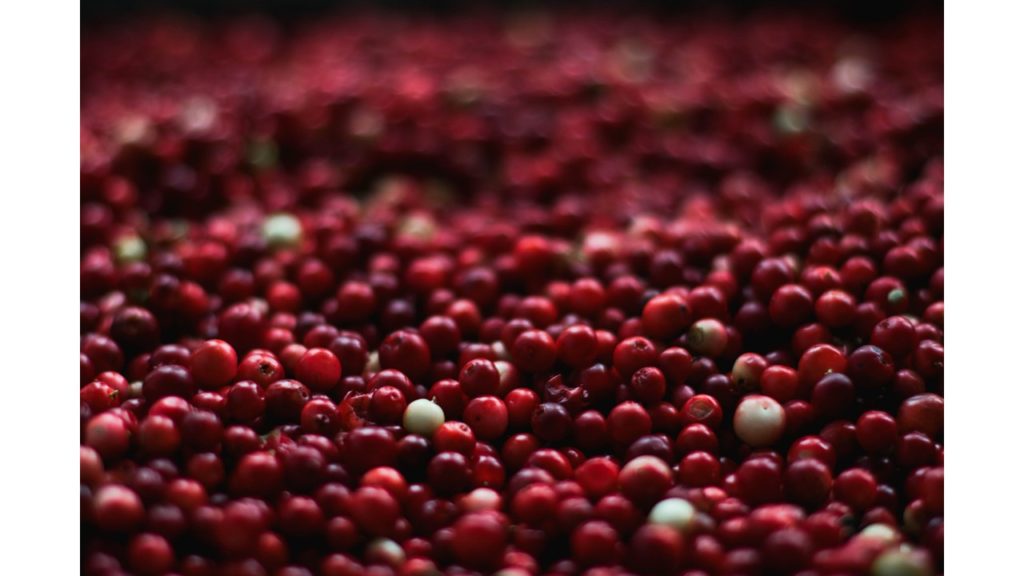
Cranberries contain compounds called Proanthocyanidins. (Try saying that five times fast!) These compounds, along with others that are not yet identified, have the well-known effect of battling urinary tract infections. But scientists recently found that they can also reduce bacterial growth in dental cavities and stimulate the immune system to combat those bacteria.
They even make cranberry toothpaste to help prevent cavities! I wouldn’t go smearing your cranberry sauce on your teeth this Thanksgiving, though. Its high sugar content would negate any beneficial effects the cranberries, themselves, might have.
Fact #8: You can demonstrate the power of a single chemical bond with nutmeg and cloves.
As you’re finishing your meal with pumpkin pie this year, you can tell your guests a cool chemistry fact about two of the spices it contains. The chemicals responsible for the flavors of cloves and nutmeg have almost the exact same structures. They only differ in the placement of a single double bond. Just moving the bond over a smidge is enough to substantially change the aroma and taste of clove to that of nutmeg.
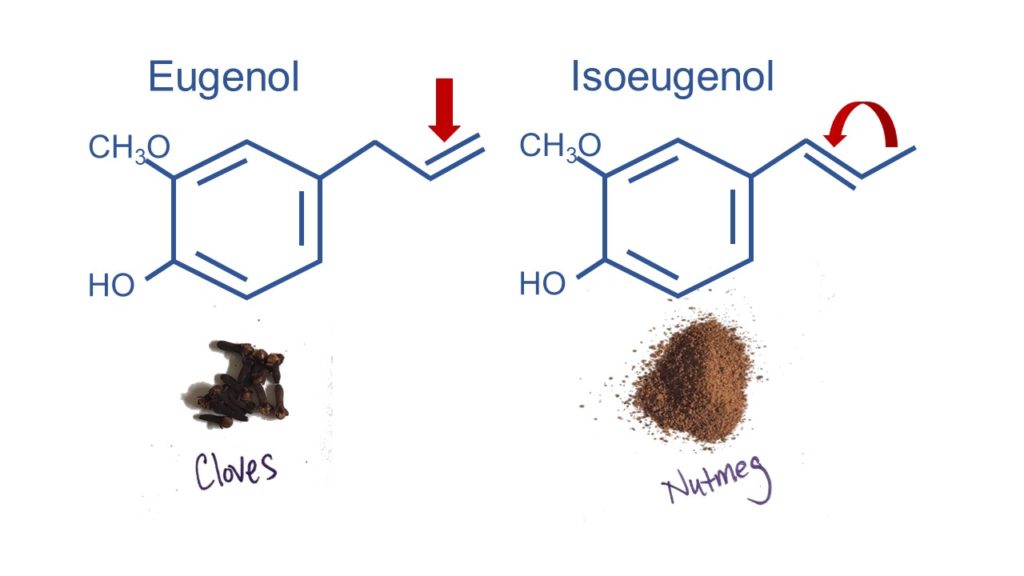
Fact #9: Physics says you should ice your turkey.
Perhaps when you’re all sitting around the table at the end of the meal, a guest will ask how you actually managed to make perfectly juicy turkey breast while also fully cooking the legs. You can wow them with your knowledge of physics! One of the biggest problems people have when cooking turkey is that the breast cooks faster than the legs, because heat moves from the outside to the inside of a round structure, like a turkey.
Harold McGee from the American Institute of Physics recommends covering the breast with ice while the turkey is coming to room temperature. This gives the legs a head start in the oven, because legs will start at about 60 degrees while the breast starts out at about 40 degrees. You can then tell your guests that you found a novel use for your ice packs.
Fact #10: Eating all that food alters your brain chemistry.
People used to think that a chemical in turkey called tryptophan makes you sleepy. Actually, it’s more likely that it is all those carbohydrates you’re eating (in potatoes, stuffing, dinner rolls…), and perhaps those (ahem) pre-dinner drinks.
But the turkey, itself, may still help you to feel good after the Thanksgiving meal. Check out the ways that your big meal may influence your brain chemicals, putting you in a happy little slumber, and even maybe helping you to remember those special family moments!
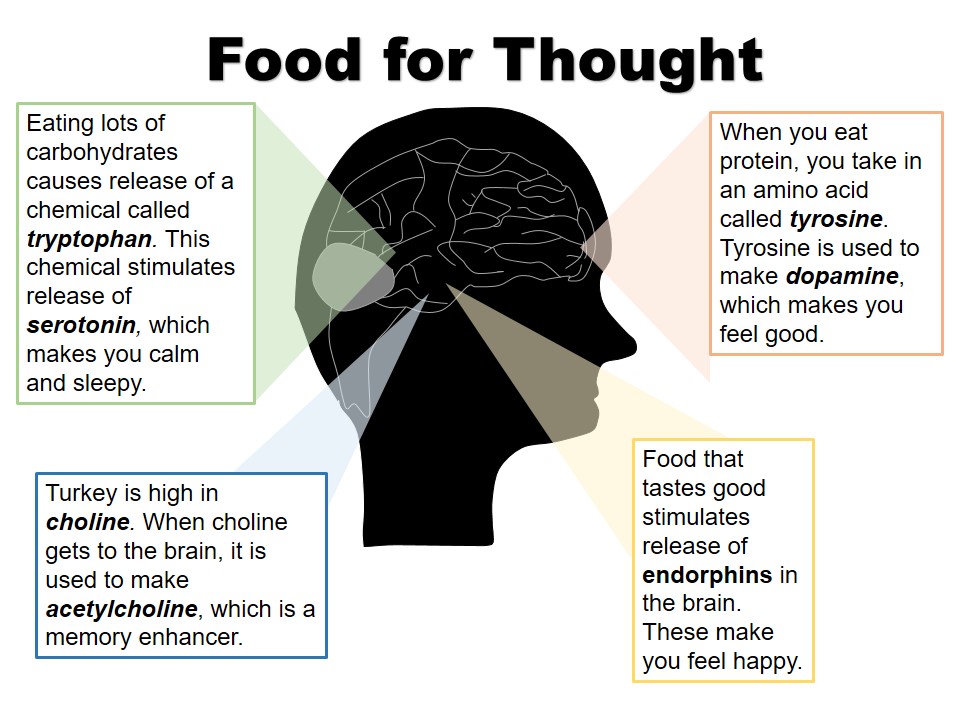
Given these effects, should you inhale a whole turkey when you need a mood boost? Probably not. The effects you get on Thanksgiving are likely more a result of the combination of foods, drinks, and family fun you experience on Thanksgiving, rather than a single food item. But it sure does trigger a good snooze when you put it all together!
I hope these facts help to keep your Thanksgiving conversation moving and upbeat! Happy Turkey Day everyone!

